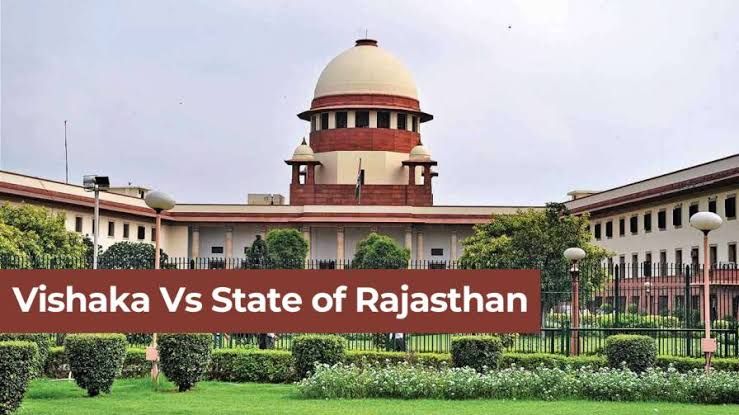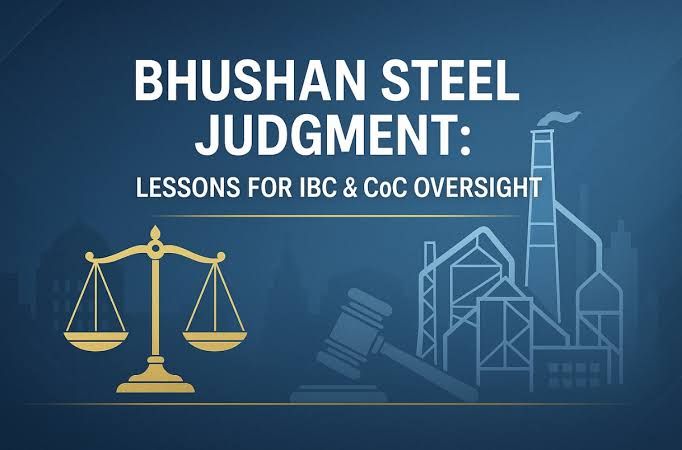Author: Ishita Saxena, a student of Symbiosis Law School, Noida
Abstract
This research paper aims at understanding the landmark judgment of Vishaka v. State of Rajasthan. This paper will be providing a brief statement of facts of the case, followed by a critical analysis of the judgment. The case is a reminder for the society to provide the female section of society, a better and safe environment at the workplace. The research paper would help the reader understand the necessity of such a safe place for women at workplace. The author aims to bring to attention through this case the public awareness that should be present so that the women of our country can safely continue their work at their workplace.
Introduction
The case is of a woman who was brutally gang raped at her workplace. The case was brought to the court as a class action, by NGOs and social activist organisations. The Supreme Court delivered its 10 – pages judgment on 13 August 1997. The case was concerned the most important articles of the Constitution of India, that is, Article 14, 19, and 21. These articles form the golden triangle of the Constitution. The case was built on articles 51A, 42, 32 and 141. The problem of sexual harassment had been underrated before this judgment had been delivered. The judgment was established as a legal precedent and it provided the important Vishaka guidelines to ensure safety of women at workplace.
Facts of the case
In this case, the victim, Bhanwari Devi, was a social activist in a village of Rajasthan. She was working on a project which aimed to stop child marriage. She tried her best to prevent a marriage of a one-year-old infant girl of Ramkaran Gujjars. Raged by this, the Gujjars decided to take revenge from Bhanwari Devi. Ramkaran Gujjar and 4 other men gang raped her. When she decided to lodge a complaint against them the police denied to file the complaint. Furthermore, her medical report was also delayed by 52 hours. The district court where the proceedings were held, acquitted all the accused. Later, a PIL was filed as a class action by a NGO named, Vishakha.
Judgment
The judgment of Vishakha v. State of Rajasthan had a crucial impact on the working environment for the women. The judgment was pronounced by Chief Justice J. S. Verma, Justice Sujata Manihar, and Justice B. N. Kripal. The Supreme Court laid down the basic guidelines that later came to be known as the Vishakha Guidelines. These guidelines are now the basic essentials to be followed at the workplaces. These guidelines endure that a smooth system is followed by the workplace to ensure the safety of the women and if any such incident happens it provides an in-depth account of redressal procedure.
The guidelines described the following: –
- Duty of the employer and other responsible persons in workplaces and other institutions:
This explained that it shall be the duty of the employer to ensure the safe working environment for the women employees and it is his duty to prevent the commission of such acts at the workplace. The employer is also responsible
- Preventive Steps:
The guidelines also elaborated the definition of sexual harassment to include more variety of gestures that constitute sexual harassment and were not included in the definition under the penal laws.
- It also requires the employer or the person in charge of the workplace to take all preventive steps. It requires the person to:
- Provide an explicit notification prohibiting the commission of acts constituting sexual harassment
- Rules of government bodies should include the penalties for commission of such acts.
- In private offices, rules should be providing in accordance with the rules set in Industrial Employment (Standing Orders) Act, 1946.
- Appropriate work conditions be provided in respect of work, leisure, health, and hygiene.
- Criminal proceedings:
It also provided that it shall be the duty of the employer to report to the concerned authority if any of such conduct happens at the workplace with a woman and initiate an action against it.
- Disciplinary action:
The guidelines also require that disciplinary action should be initiated against such person who performs such conduct.
- Complaint Mechanism:
The guidelines state that whether the conduct constitutes an offence under the law, a complaint mechanism should be present inside the office and that it should maintain that complaints are properly attended.
- Complaints Committee:
It requires that there be a Complaints Committee which would be headed by a woman and not less than half of its members should be woman. It also requires that such committee should also involve a NGO or other organisation relating to sexual harassment. This was with the intention to remove any undue influence of senior level officers.
- Worker’s initiatives:
The guidelines give the employees the right to raise issues at worker’s meetings and in other appropriate forum against any such acts in the office
- Awareness:
It requires that awareness be created towards the rights of the female workers by notifying the guidelines in a suitable manner.
- Third – party harassment
The guidelines specify that if the sexual harassment is caused due to any third party interference, the employer would be responsible to help the victim proceed with the required legal actions.
- It also requests the central/state governments should make legal provisions regarding the safety of women at workplace.
Analysis
This judgment was of dire need to protect women at their workplace. In the post-independence India, women were going to offices, they were also equally sharing the expenses of the household needs, however, they were still unsafe at their workplaces. Bhanwari Devi was also one such victim. The judgment however, reinforced the rights of women. The judgment seeks to provide a safe environment to the females. The judgment had provided a long run issue a better solution by providing the Vishakha guidelines. Through its judgment the Supreme Court has now indirectly made the employer in-charge of ensuring the protection of its female employees. The employer has to manage that no inappropriate advances are made towards any of the female employees. The judgment had an important impact on the legislations ensuring the protection of women. In 2013, The Sexual Harassment of Women at Workplace (Prevention, Prohibition, and Redressal) Act, 2013 was passed by the parliament to ensure a proper legislation that protects the rights of the women at workplace. The act facilitates the victims to get speedy justice against the sexual harassment that she had to place at her workplace.
Conclusion
The Vishakha case was a thwart to the issue of the women protection in the society. Although Bhanwari Devi did not get justice at personal level however, it safeguarded the future of the women working in various organisations. The court explained and widened the definition of ‘Sexual Harassment.’ It also ensured the formation of Complaints Committee. Overall, the judgment of the Vishakha case brought many major changes in the protection of women. The rules made by the Supreme Court were fortified by the enactment of The Sexual Harassment of Women at Workplace (Prevention, Prohibition, and Redressal) Act, 2013.
The author is of the view that this judgment although ensured a safe environment to the women but did not provide justice to Bhanwari Devi. The accused in this case were set free by the district court due to lack of evidence. It could have been made better if Bhanwari Devi also had justice at personal level. Otherwise, the Supreme Court attended an important issue that needed to be discussed at the public level. The women of the society now go to their workplace more safely and feel better in the safe environment now provided by the enforcement of the rules laid down by the Supreme Court.





